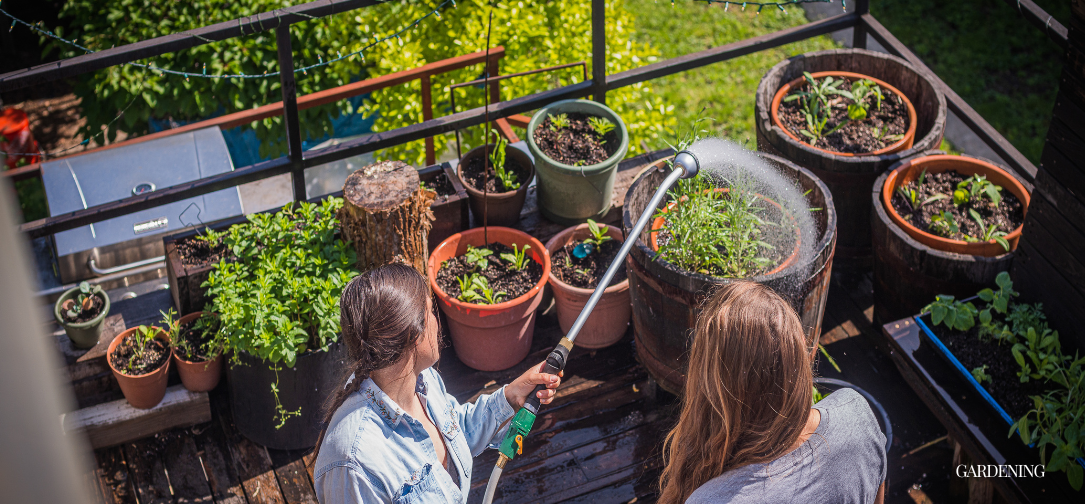Home and Garden
The Foundation of a Thriving Garden: Understanding and Improving Soil Health for Optimal Plant Growth
Published
10 months agoon

Gardening, whether as a hobby or a profession, is a rewarding endeavor that connects humans to nature. At the heart of any successful garden lies an often-overlooked component: the soil. Soil health is the cornerstone of a thriving garden, serving as the foundation for robust plant growth, high yields, and sustainable ecosystems. However, understanding and improving soil health requires a multifaceted approach that goes beyond simply providing plants with water and nutrients. This article delves into the complexities of soil health, exploring its importance, the factors that influence it, and practical strategies to enhance soil quality for optimal plant growth.
Understanding Soil Health
Soil health is a broad concept that encompasses the physical, chemical, and biological properties of the soil, all of which contribute to its ability to sustain plant life. A healthy soil is one that supports a diverse ecosystem of microorganisms, provides adequate nutrients, and maintains a balance of water and air. To fully grasp the intricacies of soil health, it is essential to break down its components and understand how they interact.
1. The Physical Structure of Soil
Soil is composed of mineral particles of varying sizes—sand, silt, and clay—that combine to form the soil’s texture. The proportion of these particles determines the soil’s physical properties, such as porosity, permeability, and compaction.
- Texture: The texture of soil affects its water-holding capacity and drainage. Sandy soils, with larger particles, drain quickly but hold less water, while clay soils retain more water but may have poor drainage. Loamy soils, which are a balanced mix of sand, silt, and clay, are often considered ideal for gardening because they provide good drainage while retaining moisture and nutrients.
- Structure: Soil structure refers to how soil particles aggregate into clumps or peds. A well-structured soil has stable aggregates that create pore spaces, allowing roots to penetrate easily and air and water to move freely. Poor structure, often caused by compaction or excessive tilling, can lead to problems such as waterlogging, erosion, and restricted root growth.
- Compaction: Soil compaction occurs when soil particles are pressed together, reducing pore space. Compacted soils can limit root growth and decrease the soil’s ability to absorb water, leading to increased runoff and erosion. Preventing soil compaction is crucial for maintaining healthy soil structure.
2. The Chemical Composition of Soil
The chemical properties of soil are just as vital as its physical characteristics. These properties determine the soil’s ability to supply essential nutrients to plants and influence the soil pH, which affects nutrient availability.
- Soil pH: Soil pH is a measure of the acidity or alkalinity of the soil, typically ranging from 4.0 (very acidic) to 8.5 (alkaline). Most garden plants prefer a pH between 6.0 and 7.5, where nutrients are most readily available. Soils that are too acidic or too alkaline can lead to nutrient deficiencies or toxicities, hindering plant growth. Adjusting soil pH, often through the application of lime (to raise pH) or sulfur (to lower pH), can help create an optimal environment for plants.
- Nutrient Availability: Soil nutrients are divided into macronutrients (such as nitrogen, phosphorus, and potassium) and micronutrients (such as iron, manganese, and zinc). These nutrients are essential for plant growth and development. Soil testing is crucial for determining nutrient levels and guiding fertilizer applications. Over-fertilization, however, can lead to nutrient imbalances, soil degradation, and environmental pollution.
- Cation Exchange Capacity (CEC): CEC is a measure of the soil’s ability to hold and exchange positively charged ions (cations), such as calcium, magnesium, and potassium. Soils with high CEC can retain more nutrients and release them to plants as needed, whereas soils with low CEC may require more frequent fertilization.
3. The Biological Activity in Soil
Soil is a living ecosystem teeming with microorganisms, including bacteria, fungi, protozoa, and nematodes, as well as larger organisms like earthworms and insects. These organisms play a crucial role in decomposing organic matter, cycling nutrients, and improving soil structure.
- Microbial Activity: Soil microbes, such as bacteria and fungi, are responsible for breaking down organic matter into humus, a stable form of organic carbon that enhances soil fertility. These microbes also play a role in nutrient cycling, converting nutrients into forms that plants can absorb. For example, nitrogen-fixing bacteria convert atmospheric nitrogen into a form that plants can use.
- Mycorrhizal Fungi: Mycorrhizal fungi form symbiotic relationships with plant roots, extending their network into the soil. This relationship allows plants to access nutrients and water more efficiently, particularly in nutrient-poor soils. In return, the plants provide the fungi with carbohydrates produced through photosynthesis.
- Earthworms and Soil Fauna: Earthworms and other soil fauna are vital for soil health as they aerate the soil, improve its structure, and enhance nutrient availability. Their burrowing activities create channels that increase soil porosity and drainage, while their digestion of organic matter produces nutrient-rich castings.
Factors Affecting Soil Health
Several factors influence soil health, ranging from natural processes to human activities. Understanding these factors is essential for managing soil health effectively.
1. Climate and Weather Patterns
Climate and weather patterns significantly impact soil health. Temperature, precipitation, and seasonal variations influence soil moisture levels, microbial activity, and organic matter decomposition. For instance, in arid regions, soils may become dry and compacted, reducing microbial activity and plant growth. Conversely, in areas with high rainfall, soils may become waterlogged, leading to poor drainage and root diseases.
2. Land Use and Management Practices
Human activities, such as agriculture, urbanization, and deforestation, have profound effects on soil health. Intensive farming practices, including monoculture, overgrazing, and excessive tilling, can deplete soil nutrients, disrupt soil structure, and reduce biodiversity. Urbanization often leads to soil compaction, pollution, and the loss of topsoil due to construction activities.
3. Soil Erosion
Soil erosion, caused by wind, water, and human activities, is a major threat to soil health. Erosion removes the nutrient-rich topsoil layer, reducing soil fertility and leading to land degradation. Practices such as contour plowing, cover cropping, and maintaining vegetation can help reduce soil erosion.
4. Organic Matter Content
Organic matter is a critical component of healthy soil, as it improves soil structure, enhances water retention, and provides a food source for soil organisms. The addition of organic matter, such as compost, manure, or cover crops, can significantly improve soil health by increasing nutrient availability and promoting microbial activity.
5. Pollution and Contamination
Soil contamination from industrial activities, pesticide use, and improper waste disposal can lead to the accumulation of toxic substances in the soil. These pollutants can harm soil organisms, reduce soil fertility, and pose risks to human health. Remediation strategies, such as phytoremediation and soil washing, can help reduce soil contamination.

Improving Soil Health for Optimal Plant Growth
Enhancing soil health is a continuous process that involves adopting sustainable practices and understanding the specific needs of your soil and plants. The following strategies can help gardeners and farmers improve soil health, leading to better plant growth and higher yields.
1. Soil Testing and Analysis
Soil testing is the first step in understanding the current state of your soil. A comprehensive soil test provides information on soil pH, nutrient levels, organic matter content, and CEC. Based on the results, you can tailor your soil management practices to address specific deficiencies or imbalances. Regular soil testing, at least every 2-3 years, is recommended to monitor changes in soil health over time.
2. Organic Matter Management
Adding organic matter to the soil is one of the most effective ways to improve soil health. Compost, aged manure, and organic mulches provide essential nutrients, enhance soil structure, and increase microbial activity. Organic matter also improves water retention in sandy soils and promotes drainage in clay soils. Incorporating cover crops, such as legumes and grasses, into your garden can further increase organic matter and improve soil fertility.
3. Conservation Tillage
Conservation tillage, including no-till and reduced-till practices, minimizes soil disturbance, helping to maintain soil structure and prevent erosion. These practices reduce the disruption of soil organisms and promote the accumulation of organic matter on the soil surface. Over time, conservation tillage can lead to improved soil health, increased biodiversity, and better water retention.
4. Crop Rotation and Diversity
Crop rotation and diversity are essential for maintaining soil health. By rotating crops with different nutrient needs and root structures, you can prevent nutrient depletion and reduce the risk of pests and diseases. For example, rotating nitrogen-fixing legumes with nutrient-demanding crops like corn can help maintain soil fertility. Additionally, planting diverse crops or using polyculture systems encourages a variety of soil organisms, enhancing soil biodiversity and resilience.
5. Cover Cropping
Cover crops, also known as green manures, are planted during the off-season to protect and improve soil health. These crops prevent erosion, suppress weeds, and enhance soil fertility by adding organic matter and fixing nitrogen. Common cover crops include clover, rye, and vetch. When incorporated into the soil, cover crops improve soil structure, increase microbial activity, and promote nutrient cycling.
6. Mulching
Mulching involves applying a layer of organic or inorganic material to the soil surface. Organic mulches, such as straw, wood chips, and leaves, decompose over time, adding organic matter and nutrients to the soil. Mulching also helps regulate soil temperature, retain moisture, and suppress weeds, all of which contribute to healthier soil and plants.
7. Composting
Composting is the process of recycling organic waste into a nutrient-rich soil amendment. Compost improves soil structure, increases water retention, and provides a slow-release source of nutrients. To create high-quality compost, include a mix of green materials (rich in nitrogen) and brown materials (rich in carbon), and ensure proper aeration and moisture levels. Applying compost to your garden enriches the soil, supports microbial activity, and enhances plant growth.
8. Water Management
Proper water management is crucial for maintaining soil health. Overwatering can lead to waterlogged soils, root diseases, and nutrient leaching, while underwatering can stress plants and reduce microbial activity. Implementing efficient irrigation systems, such as drip irrigation, can help deliver water directly to plant roots, reducing water waste and preventing soil compaction. Additionally, maintaining organic matter in the soil improves its water-holding capacity, reducing the need for frequent watering.
9. pH Adjustment
If soil pH is outside the optimal range for your plants, adjustments may be necessary. Lime is commonly used to raise soil pH in acidic soils, while sulfur can lower pH in alkaline soils. It’s essential to follow soil test recommendations when adjusting pH, as over-application can lead to nutrient imbalances. Regular monitoring of soil pH ensures that plants have access to the nutrients they need for healthy growth.
10. Enhancing Soil Biodiversity
Encouraging a diverse community of soil organisms is key to improving soil health. Practices such as adding organic matter, reducing chemical inputs, and maintaining a variety of plants in your garden support a thriving soil ecosystem. Mycorrhizal inoculants and compost teas can also be used to introduce beneficial microbes into the soil. A diverse soil ecosystem enhances nutrient cycling, improves soil structure, and increases plant resilience to pests and diseases.
Conclusion
The foundation of a thriving garden lies in the health of the soil. By understanding the physical, chemical, and biological properties of soil, gardeners and farmers can take informed steps to improve soil health and create an optimal environment for plant growth. Sustainable practices, such as adding organic matter, reducing tillage, rotating crops, and managing water effectively, are essential for maintaining healthy soils and ensuring long-term productivity.
Soil health is not a one-time achievement but an ongoing process that requires attention and care. By prioritizing soil health, gardeners can cultivate not only vigorous and productive plants but also a resilient and sustainable ecosystem. In the end, the rewards of investing in soil health are not just bountiful harvests but also a deeper connection to the natural world and a commitment to preserving it for future generations.

Crypto WINNAZ Launches First On-Chain Yield Engine for Meme Coins, Enabling 20x–300x Returns

What to Know Before Switching Cell Phone Network Services in 2025

Global Compound Feeds and Additives Industry Report: Market Expansion and Competitive Insights to 2035

Nura Labs Files Revolutionary Patent: AI-Powered Wallet Solves the $180 Billion Crypto Staking Complexity Crisis

In2space Launches Campaign to Make Space Travel Accessible for All

Inside Schedule F: Will Trump’s Federal Workforce Shake-Up Undermine Democracy?

US Stock Market Soars in May Amidst Tariff Tensions and Inflation Worries

S&P 500 Soars in Best May in Decades Amid Tariff Relief and Nvidia’s Surge

Trump’s Immigration Crackdown: Legal Battles and Policy Shifts

Trump’s Tariffs: A Global Economic Reckoning

Trump Administration’s Government Reshaping Efforts Face Criticism and Legal Battles

Attention Economy Arms Race: Reclaim Your Focus in a World Designed to Distract You

CV5 Capital Announces Standout Performance of Cryptanium Fund I SP, Beating Industry Benchmarks

Experts Warn of U.S. Slide Towards Authoritarianism Under Trump Administration

US Stocks Soar as Court Blocks Trump Tariffs and Nvidia Delivers Strong Earnings
Trending News
-

 Press Release4 days ago
Press Release4 days agoNura Labs Files Revolutionary Patent: AI-Powered Wallet Solves the $180 Billion Crypto Staking Complexity Crisis
-

 Press Release2 days ago
Press Release2 days agoGlobal Compound Feeds and Additives Industry Report: Market Expansion and Competitive Insights to 2035
-

 Technology2 days ago
Technology2 days agoWhat to Know Before Switching Cell Phone Network Services in 2025
-

 Press Release2 hours ago
Press Release2 hours agoCrypto WINNAZ Launches First On-Chain Yield Engine for Meme Coins, Enabling 20x–300x Returns





